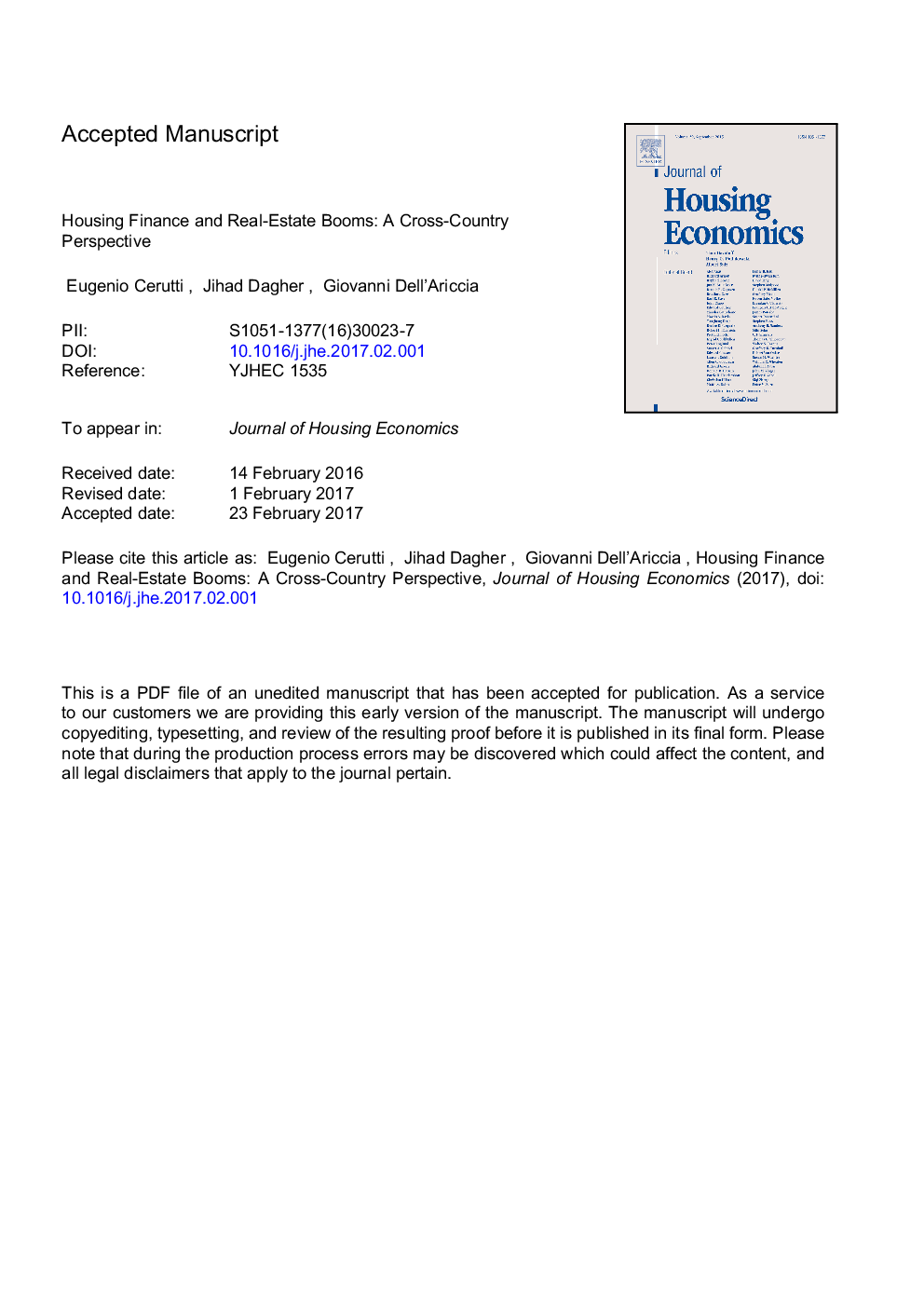| Article ID | Journal | Published Year | Pages | File Type |
|---|---|---|---|---|
| 5100824 | Journal of Housing Economics | 2017 | 38 Pages |
Abstract
The recent global financial crisis has highlighted the potential conflict between improving access to housing finance and maintaining financial stability. Using a new dataset on housing finance and house prices for a sample of more than 50 countries, this paper analyzes the dynamic relationship between household credit and house-price booms. It also examines the potential role of some housing finance characteristics on the likelihood of house-price booms and on how they ended. The following stylized patterns are highlighted. First, credit and house-price booms are tightly linked. Second, house-price booms have occurred more often with a twin credit boom (simultaneous booms in both household and firm credit) than with a solo boom in household credit. Third, house-price booms seem to be more likely in countries with higher loan to value ratios and mortgage funding models based on securitization or wholesale sources. Finally, we find that the majority of house-price booms end up with a recession, and that both twin credit booms and non-retail deposit funding predict a worse landing.
Keywords
Related Topics
Social Sciences and Humanities
Economics, Econometrics and Finance
Economics and Econometrics
Authors
Eugenio Cerutti, Jihad Dagher, Giovanni Dell'Ariccia,
